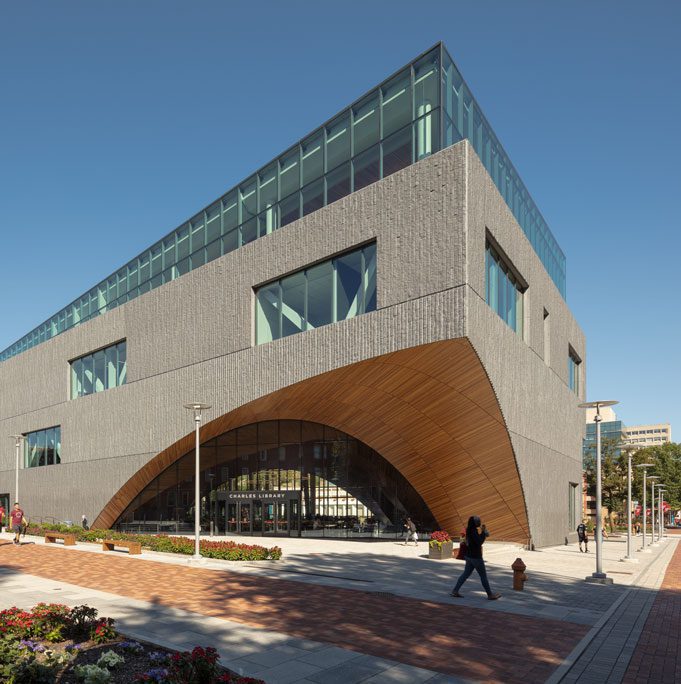
The best material for exterior cladding depends on many considerations, and natural stone often offers the best choice when features such as durability, beauty and permanence are important. What’s more, exterior stone cladding designs are an excellent choice for meeting historical preservation goals or when constructing a new structure in a historical area.


Once the design team has decided natural stone cladding or a combination of natural stone and other material meets the project’s goals, the next step is narrowing down the type of stone that works best for the environment and other requirements for the project.
When determining the best natural stone for an exterior cladding project, it’s important to consider the stone’s aesthetic and physical characteristics. How much veining is desired in the building’s façade? Various types of granite and other natural stones have different amounts of veining. What piece sizes are you considering, and will the piece sizes show more or less veining than desired?
Performance is another key consideration in selecting the right stone for the project. Performance is indicated through ASTM Testing Standards. ASTM C880, The Standard Test Method for Flexural Strength of Dimension Stone, is perhaps the most relevant ASTM test to consider for cladding applications. The ASTM C880 rating measures the breaking strength of stone over a distance, which allows the team to analyze the breaking strength at an anchor or load-bearing point. A very closely related standard, ASTMC99 – Modulus of Rupture, determines the breaking strength of the stone in a single spot. This test is most useful when determining the strength of a very specific area of the stone. Knowing which force, narrow point loading versus broader flexural pressure is important in specifying the right test for the specific application.
Because granite successfully meets the physical requirements and performance standards for cladding applications, it’s a popular choice among design teams.
In addition to aesthetics and performance standards, the stone’s finish and physical properties should be considered. Numerous finish options are available for stone cladding, each with varying characteristics for achieving the desired design aesthetic. While most colors and finishes are applicable to exterior cladding applications, it’s always best to consult your stone partner to understand any particular nuances that may exist.
To learn more about best practices for specifying natural stone cladding, contact your Regional Sales Manager.